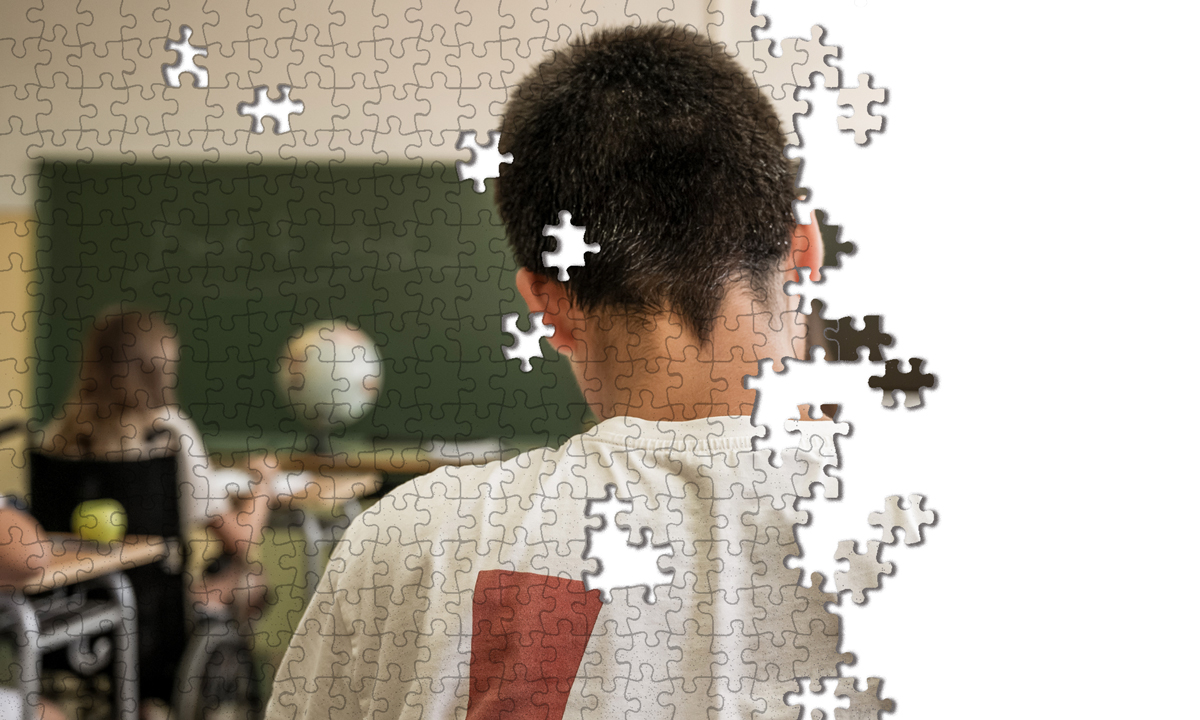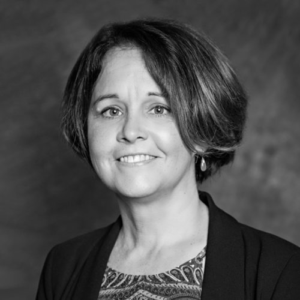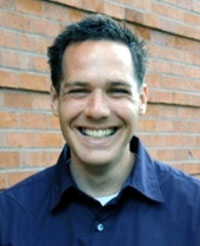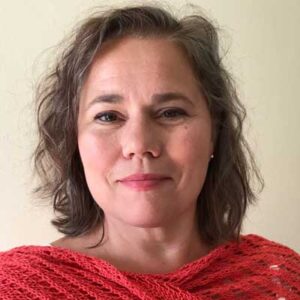Exclusive Data: More Than 1,500 Minnesota Special Ed Teachers Are Working in Regular Ed Classrooms
A 74 analysis shows Minnesota could fill its vacancies 3X over if it lured back special ed teachers from less-grueling regular ed classrooms.

Get stories like this delivered straight to your inbox. Sign up for The 74 Newsletter
At the start of the current school year, Minnesota education officials estimated there were almost 500 open special education teaching jobs throughout the state, or about half of all unfilled positions reported by districts in a voluntary survey.
At the same time, an analysis by The 74 of Minnesota’s teacher licensing records found that during the 2022-23 academic year, more than 1,500 licensed special educators — comprising 16% of teachers credentialed to work with students with disabilities — chose to work in regular classrooms.
And more than a fourth of teachers working with students with disabilities — 27%, or nearly 3,000 — lacked any special education credential. Licensed to teach language arts, social studies, music, health and other general education subjects, in many cases their schools have a state waiver to place them with students with disabilities.
The one-two punch leaves thousands of the state’s most vulnerable children — among those hit hardest by the pandemic losses — without qualified teachers at a crucial juncture. Many received little or none of the specialized instruction they are legally entitled to during COVID’s school disruptions. They have not bounced back to their dismal pre-pandemic achievement rates of 1 in 4 reading and performing math at grade level.

“Kids with disabilities are never the top priority,” says Wendy Tucker, a senior policy fellow at the Center for Learner Equity, which researches and promotes quality in special education. “They just keep getting pushed down the list.”
Even in normal times, federal civil rights laws require school systems to make up services children with disabilities don’t receive for whatever reason. But as is the case in many places, the reality in Minnesota is that districts are closing specialized programs or moving kids into makeshift settings.
To push districts to prioritize a particularly vulnerable subset of children, U.S. civil rights laws don’t allow school systems to use a shortage of qualified educators to justify denying students with learning differences the services they need to succeed. Disability advocates have long complained that the practice of assigning available but unqualified educators to special education classrooms is illegal because it is a key barrier to students making academic progress.
It’s easy to understand why administrators are exhausted meeting the bare-bones goal of having students safe and supervised, Tucker acknowledges, but for kids it’s the start of a very slippery slope: “It’s a vicious cycle. Low expectations are met, because the supports weren’t there, because there were low expectations.”
Minnesota licensing officials refused to comment on The 74’s findings about the number of special education teachers choosing not to work in the area or the high rate of jobs being filled by educators lacking special education credentials. When asked about the number of special education teachers who leave their jobs for general education classrooms, Yelena Bailey, executive director of the Professional Educator Licensing and Standards Board, said in an email that the board does not have that information: “We do not have attrition rate data due to limitations of our data system. We hope to hire someone in the coming months who can help put this together manually.”
In a biennial report to the legislature, the board has calculated annual attrition rates for teachers overall since 2017, when a new licensing system went into effect. The data shows that nearly a third of all new teachers hired since then leave within five years — better than the national average — and includes, where known, their reasons for quitting.
The report does not include information on special educators who leave. Nor does the licensing board tally actual vacancies overall, instead reporting the percentage of districts that say they have hard-to-fill openings by subject area. In lieu of the number of people schools would have to hire to be fully staffed, it uses the number of educators in all fields with waivers to work outside their licensure area and those with entry-level credentials who are working toward permanent licensure as a proxy.
When broken down by area of expertise, special education consistently tops the list of specialties taught by teachers without appropriate, permanent licenses. Last year, there were 2,000.
My phone has been ringing off the hook with parents saying, ‘My kid doesn’t have a teacher, or they have a long-term sub …
Maren Christenson, executive director of the Multicultural Autism Action Network
A lack of hard numbers outside of the assignment data examined by The 74 makes it impossible to know how many of Minnesota’s 153,000 pre-K-12 children receiving special ed services aren’t being taught by a qualified educator. Minnesota education advocates have pressed — unsuccessfully so far — for laws requiring better data collection.
But news stories and anecdotal accounts from family advocates suggest that the number is at crisis levels. At the start of the year, the state’s largest system, the Anoka-Hennepin School District, announced it was at least temporarily closing an entire specialized school for some of its most profoundly disabled students. Last year, it had 53 special educators working in general education classrooms, according to licensing records.
Minneapolis Public Schools last year canceled some in-person instruction, moving many disabled pupils back online for summer services — despite the fact that the extra instruction was needed to make up for ineffective distance learning. Last year, it had 54 teachers licensed to teach in special education that weren’t. The district started this year with at least 58 special education openings disproportionately clustered in its most impoverished schools.
“My phone has been ringing off the hook with parents saying, ‘My kid doesn’t have a teacher, or they have a long-term sub or their school is trying to pull something together using the available people in the building,’ ” says Maren Christenson, executive director of the Multicultural Autism Action Network, a nonprofit serving Somali and Oromo families in Minnesota.
“We were in a crisis before the pandemic,” she says. “It’s really disingenuous of school districts to say they are taken by surprise. We’ve known this was coming for a long time.”
‘It’s not just a pipeline issue’
Inattention to the high rate at which special education teachers quit for easier teaching jobs, say disability advocates, combined with a stop-gap approach to filling the resulting vacancies, make a reckoning about the quality of special education long overdue. Research shows that given proper instruction, most children with disabilities can achieve at grade level. Yet particularly in the wake of the pandemic’s school closures, when many special ed students were deprived entirely of services, it’s not clear they’ll have the chance.
According to a small but consistent body of research showing what could keep special educators on the job, a handful of key factors propel many into general education. A 2020 study found that 20% of new Washington state teachers who earned both a special education and a regular classroom credential chose not to take a job teaching students with disabilities at all. Other research has found that special educators are 11% more likely than other teachers to leave teaching altogether and 72% more likely to leave a job for one in another school.
Whether the departures are from special ed or from teaching altogether, advocacy groups say the turnover perpetuates the problem, as increased shortages translate to higher caseloads for those who remain, in turn making the job less sustainable. With more jobs to fill, administrators also are more likely to tap teachers who are willing to take them but who lack appropriate licenses.

Dan Goldhaber, vice president of the Center for Analysis of Longitudinal Data in Education Research at the American Institutes for Research, has studied the special educator workforce. The high number of special educators working outside the field documented by The 74’s analysis echoes his own research, he says.
“These are not new issues,” says Goldhaber, noting that the ongoing lack of special educators differs from shortfalls in other areas such as science, math, engineering and technology. “In special education, it’s not just a pipeline issue, it’s an attrition issue.”
Minneapolis teacher Tameika Williams made it through one of the pipeline-priming programs officials are counting on to ease the shortage only to find the work impossible, she said. She belongs to the Minnesota chapter of Educators for Excellence, whose leaders have heard enough stories like hers to form a task force on working conditions in special ed.
A Black woman who grew up without any teachers who looked like her or a sense of belonging in school, Williams said she never envisioned herself as an educator. She was employed by a community organization that supported families when the principal of one of the schools she worked in remarked that Williams had an affinity for connecting with youth with disabilities. A program at a local university would help her get a graduate degree and teaching credential for free.
As she was earning a master’s, Williams started teaching special ed in Minneapolis Public Schools, working entirely with students of color. She says she logged twice as many hours as she was supposed to.
After four years, however, Williams was done. When she told her principal she was quitting, he proposed she stay as the teacher in charge of a career-training program that gives students an early jump on becoming educators themselves through early college courses. Her classes now include both students with and without disabilities, but she does not have to deal with the daunting workload she had as a special educator.
The administrator she reported to before she changed jobs, Williams said, had criticized her for insisting on teaching history, saying none of her students were college bound. Williams persisted, though. Understanding the multi-generational impact of inadequate education on students of color and children with disabilities — material she was not exposed to until college — was what, Williams said, finally convinced her to get a teaching credential.
She still harbors ambivalence about the fact that some of her current students with IEPs are considering becoming special education teachers. On the one hand, more educators living with disabilities themselves would boost children receiving special education, now often not educated to be college- or career-ready. On the other, she’s not confident that they, too, won’t be pressured to dumb down the curriculum.
“I’m not gonna lie, I have some conflicting values still around encouraging young Black kids to become teachers,” she says. “I have the rooted belief that all kids are capable.”
Stories like Williams’s are common everywhere, say teachers. The Illinois chapter of the educator advocacy organization Teach Plus has collected information from members who say special education requires radical change to be a sustainable job.
After seven years in a special education classroom in Chicago Public Schools, Bridget Rood said she was burned out and tired of knowing that she wasn’t preparing the students in her program, which existed to help them make the transition to adulthood, well for life after school.
“I was depressed, I was dysregulated,” she says. “I didn’t feel fulfilled at all. I don’t think I had one student in those seven years who [went on to job training or more education].”
A Teach Plus fellowship gave Rood both a break and, as she a colleagues conducted a survey and focus groups, a sense of how pervasive feelings like hers were. Sixty-two percent of special educators they surveyed ranked an acceptable workload as the first- or second-most important thing to them. In addition to teaching, the special educators Teach Plus consulted said they strained to find time to do paperwork, talk to families, create behavior intervention plans and their own curriculum on the fly while also managing support staff.
After her fellowship, Rood went to work for a more affluent district on Chicago’s north side, Niles Township High School District 219. More resources means she does not have to scrounge to find curriculum or other instructional resources. She is still responsible for paperwork, but a departmental secretary takes care of a huge number of repetitive, time-consuming tasks, such as making sure the right people are scheduled to attend the meetings where students’ plans are discussed, completing the boilerplate sections of those plans and collecting data for progress reports.
“It is literal night and day,” she says. “It’s also made me realize — without tooting my own horn — that I am good at what I do and I do make a difference.”
‘This person has a harder job’
Again, this comes as little surprise to national researchers. Because of the paperwork involved in each student’s legally required Individualized Education Program, or IEP, special educators must work more hours than other teachers — almost always for the same pay. Recently, administrators in Hawaii, Detroit and Atlanta have had dramatic success filling vacancies with new hires and licensed special educators already on the payroll but not in classrooms serving disabled kids by offering annual incentives of $10,000, $15,000 and $3,000, respectively.
Only one Minnesota district, St. Paul Public Schools, has tried the approach. Its offer of a $10,000 hiring bonus filled its 70 openings for the 2023-24 school year in a few weeks.
Historically, school systems are reluctant to consider paying some teachers more than others based on anything but education and experience, says Chad Aldeman, a 74 contributor and researcher who tracks the education labor market.
“Historically, unions have opposed offering special incentives for teachers who work in shortage areas or hard-to-staff schools,” he says. “We as a country have treated teachers universally and not said, ‘This person has a harder job.’”
Yet while there is evidence that large financial incentives can be an effective way of filling special education vacancies, new Brookings Institution research on Hawaii’s foray into differentiated pay found that it may not significantly impact their retention.
Teach Plus’s report also flags teacher training and early career mentorship as factors that educators say would keep them from floundering as they learn the job. Colleges of education vary in how much classroom exposure would-be special education teachers get, with hands-on preparation ranging from a few weeks student teaching under a general education teacher to year-long residencies with a skilled special educator.
In terms of mentorship, the Illinois survey found that support for some new teachers consisted of brief check-ins — sometimes consisting of phone calls during the evening commute — with veteran colleagues. In Minneapolis, Williams said she spent her first year on a team with no one more experienced than her.
Many states that have confronted special educator shortages chiefly by trying to increase the supply of new teachers. Minnesota advocates have applauded slowly but steadily growing scholarships for teacher candidates who agree to get their special education certification. But they are critical of how officials have expended their energy, complaining that the needs of kids with disabilities have taken a back seat to politics.
In 2016, in the wake of a decade of lawsuits, legal reforms, and an audit pronouncing the licensing system irretrievably broken, state lawmakers passed a wholesale overhaul, creating a new agency — the current board — to oversee it. One of its mandates was to make it more straightforward for teachers of color and nontraditional candidates to enter the classroom. To that end, lawmakers created a system where, depending on their education and experience, potential teachers could start work on a temporary credential and go on to earn a permanent one.
The new system, which went into effect in 2017, was successful, allowing 2,000 special educators to start work. But last year, based on lobbying from the state’s traditional colleges of education and the teachers union that also represents their faculty — who have played a major role on the appointed licensure board — lawmakers agreed to begin reversing the changes. Next year, board leaders say they plan to seek further contractions.
The irony, say advocates, is that the special educator pipeline is narrowing dramatically even as scant attention is being paid to what equips a new special educator to do a very hard job well, and what might keep them in it.
“What we need to do is really work backward and figure out what creates a high-quality special ed teacher,” says Josh Crosson, executive director of EdAllies, an advocacy group that has been pushing for teacher licensing reforms in Minnesota for more than a decade. “What schools are they [working in]? Are there trends within those schools? What preparation programs are those schools recruiting from? What are those preparation programs providing? Mentorship models? Residency models?
“We don’t have any of that data. We’re really just guessing.”
Disclosure: The Bill & Melinda Gates Foundation and Walton Family Foundation provide financial support to Teach Plus, Educators for Excellence, the Center for Learner Equity and The 74. The Carnegie Corporation of New York, the Joyce Foundation and the Charles and Lynn Schusterman Family Philanthropies provide financial support to Teach Plus, Educators for Excellence and The 74. The Mind Trust provides financial support to Teach Plus and The 74. The Nellie Mae Education Foundation provides financial support for Educators for Excellence and The 74.
Get stories like these delivered straight to your inbox. Sign up for The 74 Newsletter

;)

